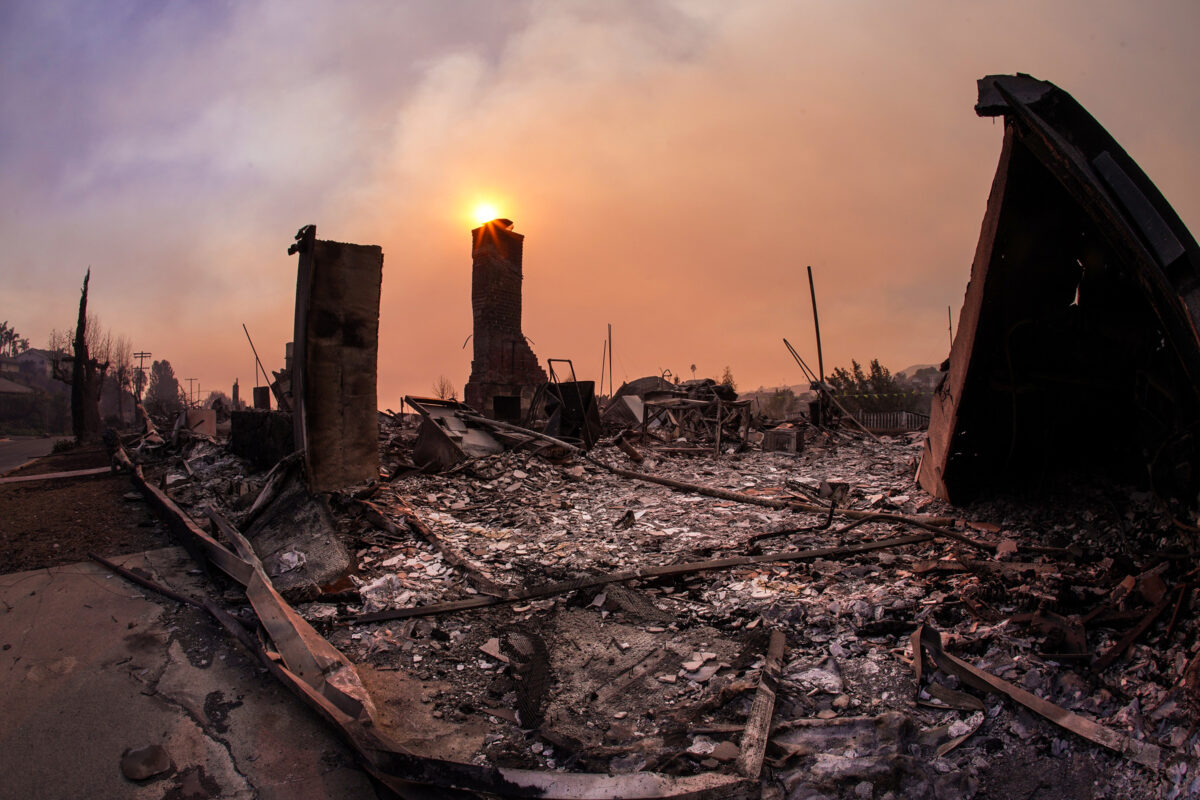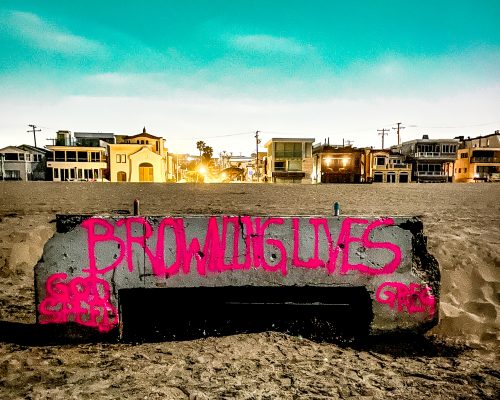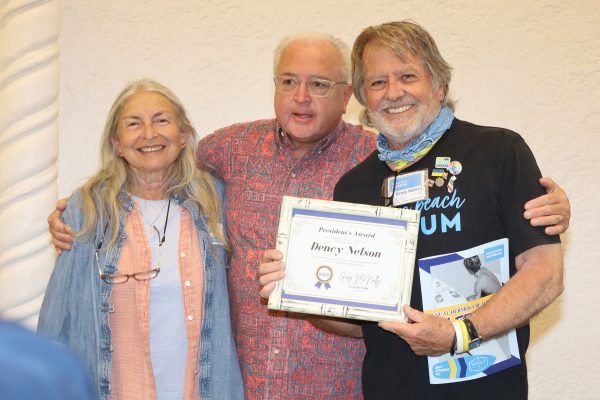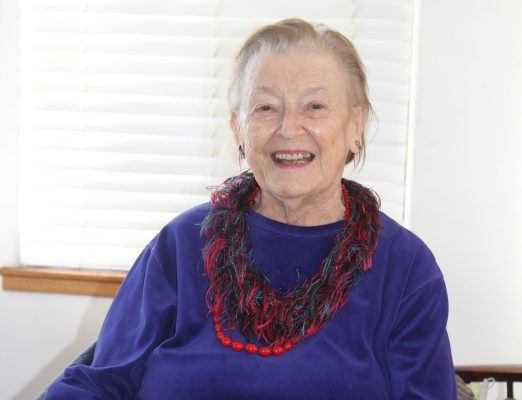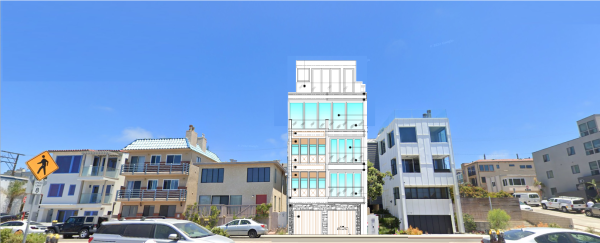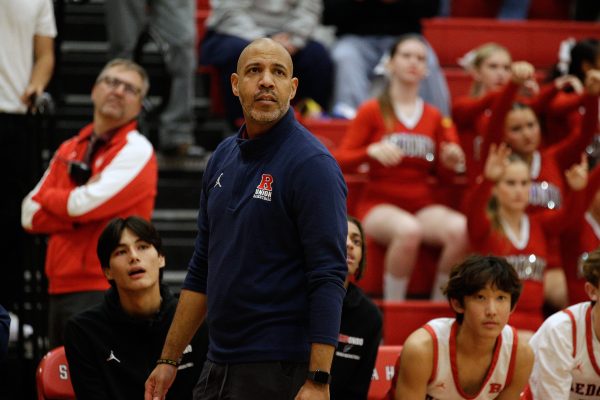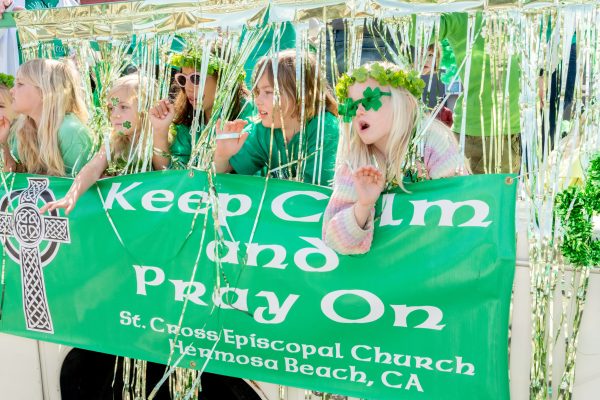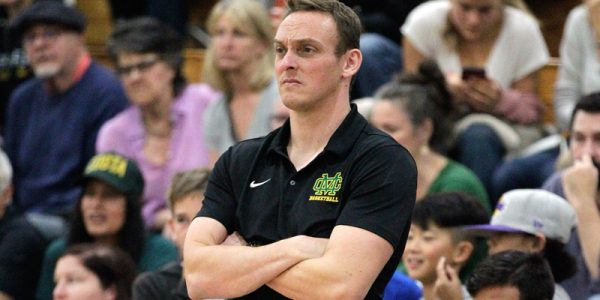by Mark McDermott
Annie Hartley loved the house the moment she stepped inside.
She is a Realtor in Manhattan Beach, so Hartley has developed a sixth sense about certain homes, kind of like how a sommelier picks up notes in a glass of wine that most people do not. It begins with where the house is, of course — location, location, location, as the adage goes — and this house was on a walk street on the 400 block, close both to the ocean and downtown yet with that mellow, communal feeling Manhattan Beach’s walk streets are famous for. The design was likewise note-perfect, modern and clean yet homey and warm, with wood floors, an open floor plan, and wood beams forming a cross in the main living area that made it feels somehow like a country ranch house at the beach.
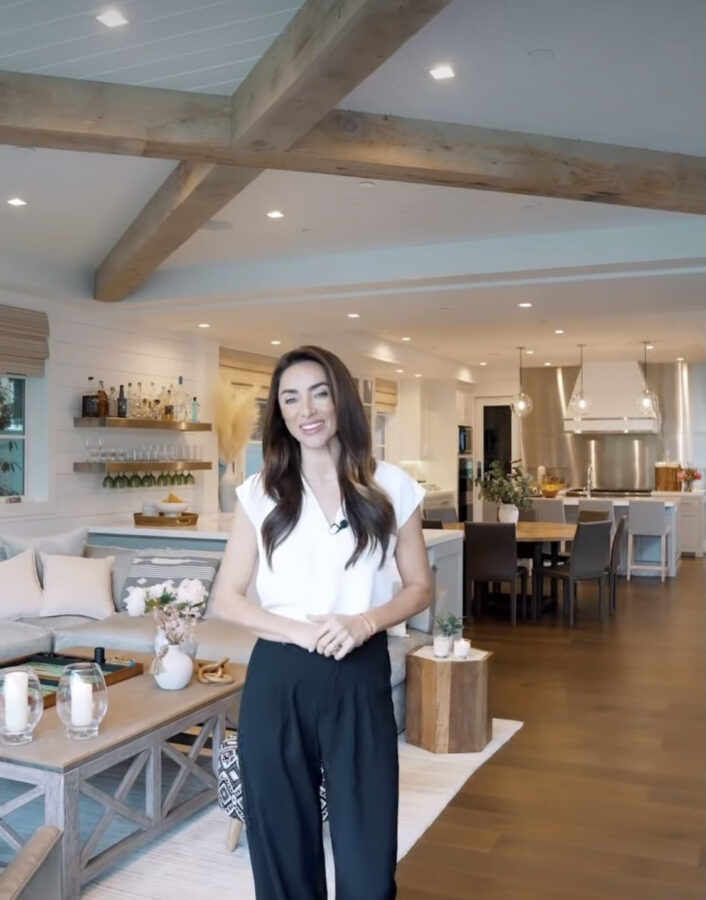
“It is quite simply, the perfect home,” Hartley later wrote on Instagram. “The best location, ideal layout, style and most importantly, the best feeling when you walk in.”
But what really struck her was the owners. The family exuded something special far beyond the beauty of the home, but like the house, an easy, effortless warmth. The husband, who Hartley dealt with most over the details of the sale, was unfailingly kind.
“I was lucky enough to literally work with like the kindest, nicest human I have come in contact with in so long,” Hartley said.
That kindness was about to be put to an unusual test. Hartley and the owner had agreed to officially put the house on the market January 8. On January 7, wildfires consumed Pacific Palisades. Over 5,000 homes were destroyed. Immediately, the phones of local Realtors started ringing non-stop. Families were looking for leases, and even purchases, immediately, and with a fervency never before witnessed in the real estate community. Manhattan Beach is 22 miles distant from Palisades, but is the community most akin to that lost town — coastal, casual, affluent, beach volleyball-crazed, with good schools that attract people raising families.
“We were prepping the house, getting everything ready,” Hartley said. “It was supposed to be coming out on a Thursday, and the fires happened on a Tuesday. So it was a frenzy. At first it was like, Oh my gosh, should we not come out? This feels weird. Then it was like, You know what? People are actively looking for homes, not only to rent, but to buy. Like, let’s make this available.”
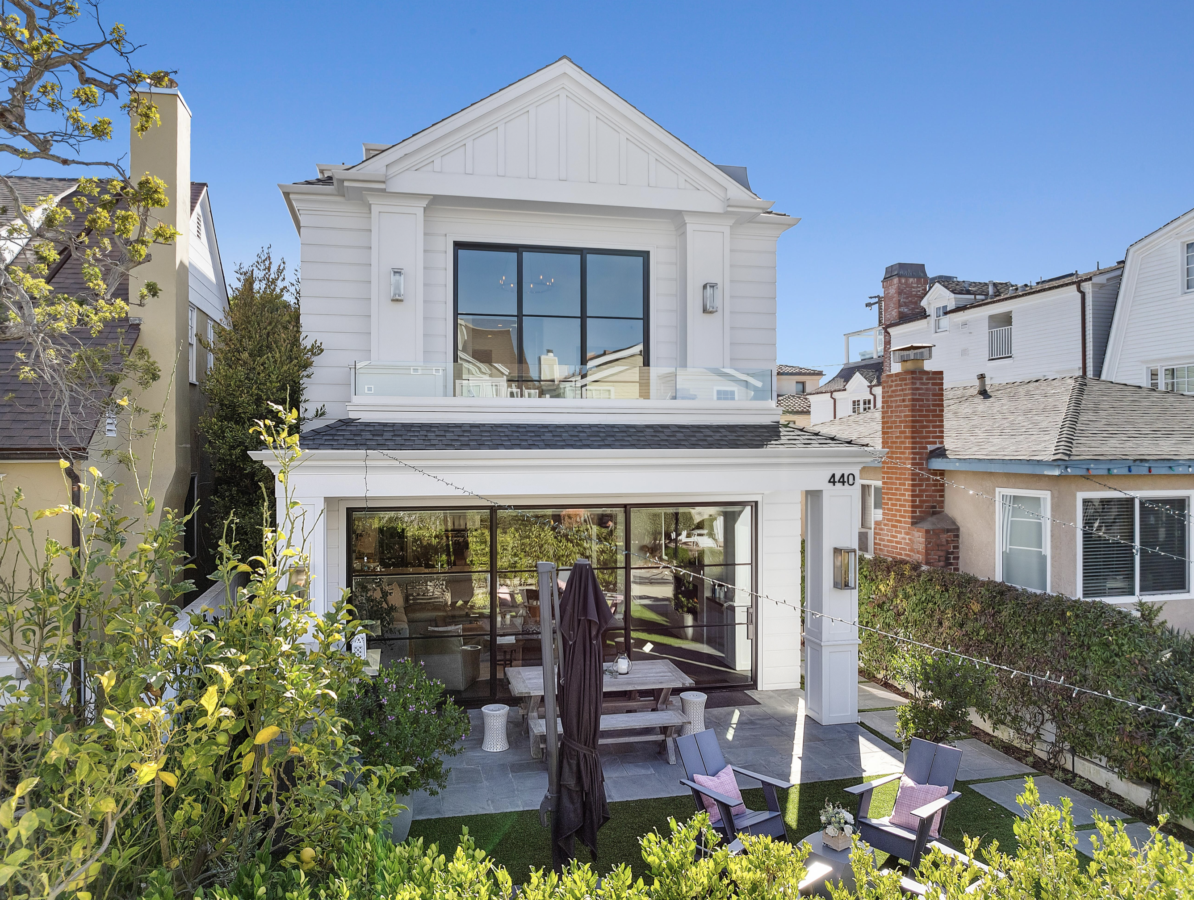
It was only two days after the fire, so it wasn’t clear just how much the purchase market would be affected yet — unlike the lease market, where the demand was beyond frenzied — but it was pretty clear the laws of supply and demand would result in price increases. But the owner of the house didn’t raise the price.
“It was just, ‘Let’s get everything out so people have an opportunity, right?´ Hartley recalled.
She met with around 30 prospective buyers in just a couple days. All of them were from Palisades.
“They all had that same shell-shocked look on their faces,” she said.
Not only did the seller not want to take advantage of the situation, he directed Hartley to expedite the sale — a final decision would be made within two days, by 5 p.m. Saturday.
“By Saturday, we had multiple offers,” Hartley said. “Usually in real estate, we would do a counter offer on all of them, and then you would make them go through another round to try to outbid each other. And he was like, ‘I don’t feel good about this. Let’s make it so these people, if they don’t get this one, they can scramble and find something else. Just tell everyone we’re picking one on Saturday. No multiple counters, nothing. We’re just going to pick one.’”
“So that’s what we did, which was incredible, because we could have easily waited and done another round. He wanted to call it on Saturday at five o’clock, and that’s what we did. It was done out of kindness. Unfortunately, people still were calling after the fact, trying to get in.”
Everybody in real estate in the South Bay was working long hours that week, and for the weeks to come. They were trying to create new rental and purchase inventory, searching for second houses that were unused, or nudging clients who’d been thinking about leasing or selling. Mainly they were simply trying to house people. The calls they were receiving were heartwrenching. For Hartley, a mother of four, the feeling was visceral. The realization that all the mundane day-to-day aspects of life, like getting the kids to school, preparing a family meal, meeting up with other friends in town — all of it could be taken away from a family in one billowing puff of smoke. Hartley’s entire time in the house on the 400 block of 4th Street brought all this quite literally home.
“I was in the house that I was listing, from Wednesday to Saturday night, probably 12 hours a day,” she said. “I had open houses and showings. I had my mom in town to help with my own kids because I was so busy. And I remember every night coming home and just being like, ‘Oh, my god.’ People are easy to say, ‘Oh, these are such rich people, they can just buy another $10 million house.’ Yes, they are lucky. There are a lot of people much less lucky that don’t have the means to buy a house. But still, they still lost not only all their belongings, but their day-to-day life is gone. Everything. It was very sad, and just very eye-opening, coming home every night and being like, ‘Wow, those people the next day aren’t going to drop off their kids.’ And it all always comes back to your kids, trying to make them comfortable, just whatever you could do to get them back in a good place.”
The house had another feature that nearly all the Palisade folks gravitated to, a piece of wall art that in multicolored words said, “Something Good Just Happened.”
“It was like this beacon of hope,” Hartley said. “But of course, it didn’t work out for everyone.”
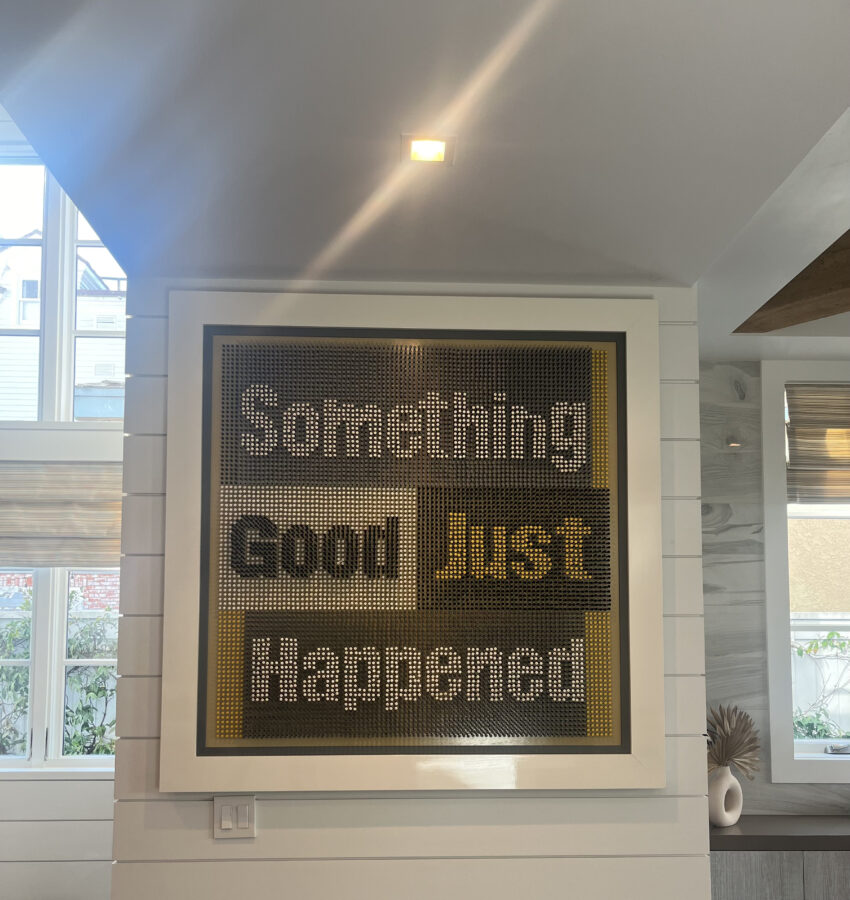
The home was listed at $8.2 million and sold for $9 million. But the reality is that if the seller had wanted to, he easily could have gotten hundreds of thousands of dollars more, quite likely another million. His refusal to do so wasn’t what we commonly think of when we think of heroism, but at the same time, few people leave a million dollars on the table simply because it is the right thing to do. It was an act few people saw, for which he would receive no other compensation except knowing he’d done the right thing. After it sold, Hartley told the seller both about how the Palisades people had been lifted by that piece of art.
“He was just in tears over the whole thing, so happy to just have it done and have someone who really needs that home,” Hartley said. “He was one of these people you just don’t come across often in life. And he never once asked me, ‘How can we make more money? Should we come out at a higher price?’ Instead, it was, ‘Oh, these people. I can’t believe this has happened to them.’ And that was so refreshing. Because it could have become a very greedy situation.”
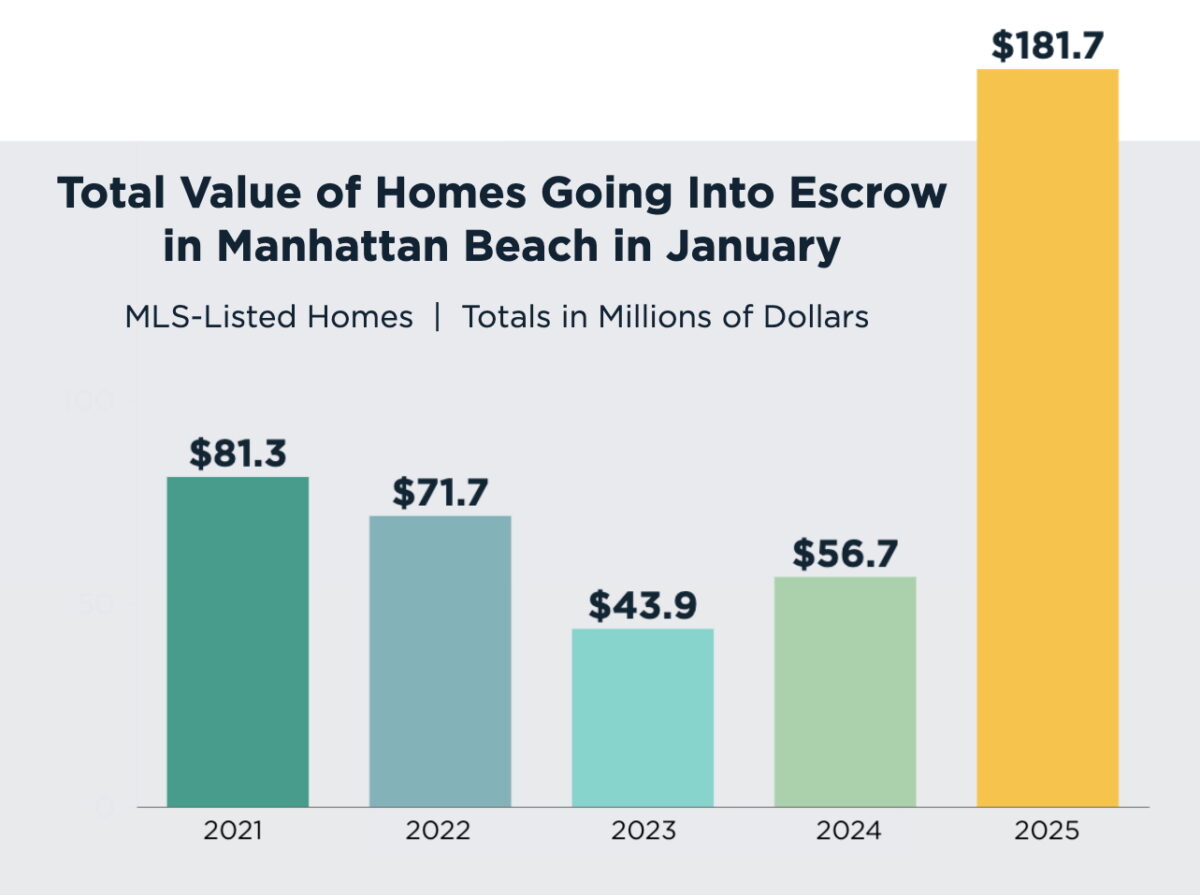
Welcome to Pali South
In Manhattan Beach schools, the new students, who now number in the hundreds, are simply called the “Pali” kids, as if they were members of a newly migrated tribe. Throughout the community, the families who lost their homes in Pacific Palisades wildfire have been emphatically welcomed, with everything ranging from local tours to fundraisers to hand-made signs on MBUSD campuses simply saying, “You belong here.”
Within weeks of the January 7 fire, it became clear that Manhattan Beach was most emphatically the preferred destination for Palisades families needing a new home. The first tangible signs were the frenzy in the local rental market and the enrollment of over 200 students in local schools. By two weeks ago, when a welcoming event was organized by several local moms (see story page 12), a new term had emerged for this community-within-a-community: “Pali South.”
Very quickly, some of these families began making a bigger commitment. They bought homes.
Last month was the biggest January in Manhattan Beach real estate history. According to MLS data analyzed by Dave Fratello, broker and owner of Edge Real Estate and author of the MB Confidential website, homes cumulatively valued at $181.7 million went into escrow in the month of January, compared to $56.7 million in January 2024, and $100 million more than the post-Covid boom in January 2021, $81 million, the previous record for January. “The impact of fire-displaced families – many from Pacific Palisades – entering the market is showing in dramatic fashion,” Fratello wrote.
“There’s never been a $100 million January, and this year, we beat the record by 100 million,” Fratello said in an interview. “That’s how extraordinary it was. January is supposed to be a sleepy month, a time when people are actively listening or looking. But this January was obviously fundamentally different.”
Realtor Richard Haynes, who publishes a blog analyzing the entire South Bay real estate market, said that the lease market has flooded with fire-impacted families throughout the area, but Manhattan Beach has been the apex of the purchase market.
“Everyone is being impacted from the rental perspective,” Haynes said. “That’s obvious. Everything is being impacted [throughout the South Bay] from the rental perspective. That being said, from a sales perspective, I am still seeing ground zero in the South Bay being Manhattan Beach.”
Realtor Robb Stroyke, co-founder of Stroyke Properties Group and Bayside Real Estate Brokers, said that a ripple effect is occurring. Some of the buyers entering the market are from Palisades, but many are locals or others not from fire-affected areas who felt compelled to move forward with purchases they had been considering due to the influx of Palisade buyers.
“The initial surge of renters was coming in hot, by way of referrals, more than any of us could handle. It was pretty chaotic and it lasted about three weeks.”
Stroyke said. “Then what happened is the leasing inventory was being absorbed. As people watched that happen, the buyers that were sitting on the fence over the holidays and not buying — but have been looking to buy for three months, or whatever — they saw that a large group of people were moving to the area who had the financial capability to buy. And they basically jumped off the fence. So you saw a bunch of deals start going down.”
Stroyke has compiled a study for sales in Hermosa and Manhattan Beach early last year versus early this year.
“In 2024, the closed escrows in January and February were about $103 million for those two months,” he said. “Through the end of this January, there were properties under contract, pending, or sold at over $221 million. Just for January. Now, will all of them close in February? Maybe. Some already have.”
Jerry Carew, broker and owner of Three Leaf Reality in Manhattan Beach, said the spike occurred within a week of the Palisades fire.
“I do a thing every Wednesday for our meetings that shows activity across the Beach Cities, and so I have records for every week, for years and for decades,” Carew said. “So I can see where the numbers were last year versus this year and how it changes each month, or even each weekend. The numbers jumped this year from the second week to the third week [of January], escrows did, by 50 percent. So from the second week of January to the first week of February, escrows were actually more than doubled. And if you compare that to a year ago, the conditions are the same — the interest rates are the same, there’s really nothing new, but it’s up by 37 percent. So you can clearly see the change.”
Carew’s data, which includes El Segundo and all three Beach Cities, show 57 homes going into escrow the first week of January and 60 the following week. By the first week of February, that number was at 124. A year ago, 69 homes went into escrow the first week of January, but only 19 the first week of February.
“This is across all those cities, it’s not all just in Manhattan Beach,” Carew said. “It’s higher in Manhattan Beach and homes in Hermosa, the effect, but things are beginning to sell faster now than they were. There’s no two ways about that.”
Fratello has studied who the buyers are in this surge.
“There’s two kinds of buyers in the market today,” he said. “There are people who were in the market previously who have been inspired to act quickly because they realize they’ve got a lot of competition, and there’s a lot of buyers in the market who are relocating here. And there were some who made that decision incredibly early — literally, the first Palisades people we saw who were relocating to Manhattan Beach were in the first three or four days after the fires. But now there is more momentum behind it as people are deciding where they really want to live. This is a natural fit, and their friends are here, and they’re telling them to come. So it snowballed.”
The initial wave of buyers from Palisades were also a specific subset of the market, those with enough wealth to be able to quickly pivot to a home purchase long before they knew what their home insurance would eventually pay out. These buyers have tended to zero in on the higher part of the Manhattan Beach real estate market. Fratello’s data analysis on MB Confidential backed up what many had observed more anecdotally.
“Out of 40 deals made [in January] off MLS-listed properties, 17 were priced at $4.8M or higher, with 12 at $5.950M or higher,” Fratello wrote. “Over $97M of the nearly $182M has been sold in the Sand Section.”
Haynes looked at sales over $6 million from Manhattan Beach to Palos Verdes this January compared to last January.
“There were three home sales over $6 million in January of 2024,” he said. “One in Manhattan Beach and two in Palos Verdes Estates. Those were the big sales to kick off 2024. This year, in January, there were nine home sales over $6 million. Seven in Manhattan Beach, one in Hermosa, and one in Palos Verdes Estates. It’s a small sample, but I think it’s really telling about what’s happening, because compared to the Westside [of Los Angeles], we aren’t a luxury market that sells $20 and $30 million homes regularly, like you see in Bel Air and Beverly Hills and those areas. But really, in January to see three [higher end sales] from last year jump to nine, that’s significant.”
“It’s not just the number of sales, it’s the price points. They’re huge,” Fratello said. “And that includes overbids, off-market sales. Just anything that’s out there on the market, almost regardless of price point, is getting vacuumed up. And that tells you something about both the desperation and the capacity of the buyers who are coming down here. They just don’t bat an eye when they see our real estate prices here. There’s very few markets that you can compare these to — maybe some prime parts of Newport, maybe Bel Air, certainly Pacific Palisades.”
But if the higher end of the market is the most impacted thus far, the entire local market is likewise in unprecedented territory. Stroyke said that a home on 34th Street, his brother Bryn’s listing, had lingered on the market last year. That home had sold for $3.8 million in 2021 and recently sold for $6.2 million. Another home was a 9th Street walk street home that was purchased for $5.7 million in 2021 that recently sold for $9.1.
“Both those homes were 63 percent appreciation,” Stroyke said. “That is similar appreciation to 2002-2006. So it isn’t unheard of.”
Nobody is saying that these kinds of price increases are here to stay. But after three very slow years, such sales are catching everyone’s attention.
“We’ve just finished basically two and a half years of a market that was really stalled out. Nobody wanted to sell,” Fratello said. “That was the golden handcuffs of people having super low interest rates … .so they didn’t want to get out of a 3% mortgage and go start paying 7% on a new place. So it had kind of frozen people in place. Almost the only sellers we’ve seen in the last almost three years have been cases with a death or divorce or job transfer, major life events that are kind of requiringre the sale. And so what we have there is pent up supply.”
Fratello said usually he does pricing analysis based on the previous 6 or 12 months, but that’s impossible to do right now.
“I’ve had many people ask me for updated valuations, and I’ve had to say, ‘Look, this is all too new. I can give you a value based on the last several months, but the way the wind is blowing, it may be you may get another 10% or 15% or 20%, because the demand is so extreme. If you’ve got something that fits this market, particularly a larger home that’s in a pretty good location, all bets are off. And, you know, we’ll, we’ll, we’ll figure out where prices are going to settle, you know, six months or 18 months from now. But there’s a lot of money chasing very little inventory. You’ve just got to put it on the market and see what happens, right?”
“We just experienced a historic dislocation of supply and demand that will have a lasting impact on the housing market here for five years or longer,” Stroyke said. “Historically, Christmas, through the Super Bowl and ski week are a slower time in the market. That didn’t happen this year. It took off.
When one tries to put their head around the logistics of rebuilding 10,000 homes in a big city — it’s going to take a long time, longer than people probably realize and be more expensive than people estimate, because there are only so many skilled workers, building supplies, appliances, cement, etc.
So I foresee this market staying strong for the foreseeable future.”
The refrain of complaint in the real estate community for the last few years has been this persistent lack of inventory. That has not changed outright overnight. But it appears almost certain that the last month is the beginning of a thaw that could break the dam.
“What’s been going on the last several weeks is a huge signal that everybody’s hearing, and it’s making all kinds of people suddenly enter the market to sell,” Fratello said. “We still don’t have enough supply, but there’s a lot more coming, because people are aware of what’s going on the market.”
Beyond questions of inventory and pricing and market impacts, the last six weeks have brought an unusual kind of awareness among local real estate professionals. It was an all-hands-on-deck situation in which a lot of people waived or reduced fees and found themselves working sun-up to sundown trying to find homes for a devastated group of newcomers. It was the creation of “Pali South,” and the feeling was everyone was in this together.
“The real estate community in general here is more polite and courteous to each other than Beverly Hills or West LA,” Stroyke said. “I’ve heard that repeatedly over the years, in terms of coming together as a community of business people. So we all got together, and we’re still getting together, and sharing information and trying to help people the best we can. It’s more than a refreshing experience, really gratifying to be able to help people and find a spot for them.”
Stroyke, like many others, has even found himself working on rentals, something he’s never done much of before. But these are different circumstances that require a whatever-it-takes approach. Everybody who has dealt with the Pali South folks has enlarged their own sense of community.
“The other thing that I kind of realized is that the communities are similar,” Stroyke said. “It’s almost like cousins or brothers and sisters in that you have people who are families, and they’re by the beach, and it’s a nice community. I have so many friends, and friends of friends, in that community. Everybody does. And we are all a volleyball community, right? We all play beach volleyball, and then indoor, and you have these masses of people who have sometimes played against each other in high school or club volleyball, but then sometimes you are on the same teams, then in college, as well. So now we are all on the same team.”
Annie Hartley had another kind of “same team” experience related to that unusual walk street home sale she facilitated. When an offer was accepted on that Saturday night the week of the wildfire, she had to also make some tough phone calls to families from the Palisades whose offers were not accepted. One family in particular was devastated; she talked to their agent, and remembered them, and how excited they were, from the previous day’s open house. So she and the agent — who’d also lost his office to the fires — agreed to work together. He sent his clients her way the following day, and three days later they found a home. It wasn’t Hartley’s sale, but it was just as satisfying as if it had been.
“I let [the agent] deal with the negotiations and everything. My job was just kind of helping him find something,” Hartley said.
And this is how community works: Hartley’s husband had just recently started a basketball league for 6th and 7th graders at the American Martyrs gym, a few weeks later, the Palisades agent’s client, whose home she helped find, was at the Martyrs’ gym with his son. They exchanged a nod, and a few kind words.
“You know, it’s all full circle,” Hartley said. “It all comes back around. It was amazing to see, and help another family.”

